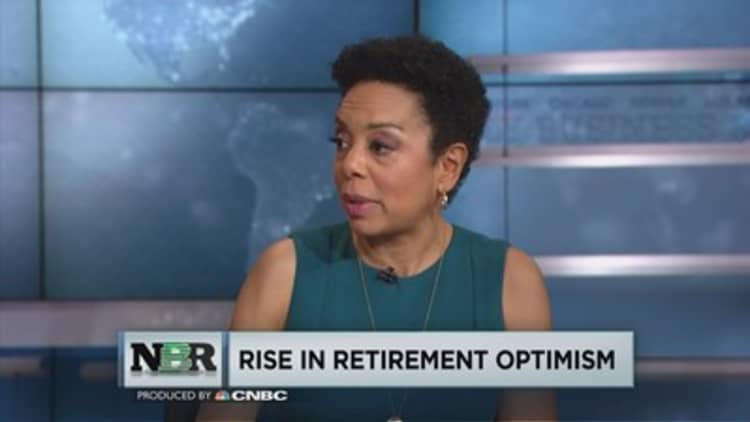Turns out staying the course pays off.
According to a report released by Fidelity Investments, the average 401(k) retirement plan balance rose by 466% to $297,700, in the 10 years since the March 2009 market bottom.
Millennials, who had average savings of $7,000 in the first quarter of 2009, saw their average 401(k) balance grow to just under $130,000, a gain of 1,762%.
The numbers are surprising, said Michael Gibney, a certified financial planner with Modera Wealth Management in Westwood, New Jersey.
"Once you set it and forget it, people are amazed by how much their balance will grow."
Fidelity based its findings on 1.64 million accounts where workers actively contributed and remained at the same company over the decade. The total amount includes both participant and employer contributions.
The eye-popping gains were certainly helped along by the overall market performance. The is up roughly 320% over the same time frame, or 426% when factoring in dividends.
"While the growth of account balances is due to a combination of market performance and savings, both are critical to reaching long term retirement savings goals," Kevin Barry, president of Workplace Investing, said in the report.
Seeing a big number in your account may be deceiving, warned EVO Advisers' David O'Brien, a financial advisor who helps smaller companies manage and develop 401(k) plans.
"It needs to have context," said O'Brien. "Answering that big question of, 'Am I contributing enough?,' and, for millennials, 'Am I contributing it in the right tax bucket?'"
More from Personal Finance:
Your child's sports could be sabotaging your finances
Here are the best and worst jobs of 2019
Retirees are flocking to these hot spots
Because contributions are made pre-tax, 401(k) plans offer the upfront benefit of lowering the amount of income subject to taxes.
But eventually you have to pay the piper (in this case, the IRS) and money taken out in retirement is taxed at your ordinary income rate, which for the top bracket is currently 37%.
Blair duQuesnay of Ritholtz Wealth Management in New York suggests splitting retirement savings equally into three buckets. In addition to a 401(k), duQuesnay has clients use a Roth individual retirement account — which is funded by post-tax dollars, making withdrawals in retirement tax-free — as well as a brokerage account. "You'll have flexibility to manipulate your taxable income in any given year during retirement," she said.

Still, a 401(k) offers unique benefits. One reason behind the dramatic increase in balances: employer contributions. Many companies will go dollar-for-dollar with their workers, putting in money up to a certain percent each year.
"Put in at least up to company match because you're getting a 100% return on your own contribution," advised Gibney.
Perhaps another lesson to be learned from Fidelity's findings is to not panic. March of 2009 was a scary time for the world and investors. Investment bank Bear Stearns went bankrupt and the Fed was just beginning its multi-billion-dollar bailouts.
But those who kept investing were rewarded with the longest bull market in history.
"Keep your behavior in check, keep your emotions in check, keep investing," said O'Brien. "It sounds silly, but the best thing for investors who save every payday is for the market to be down every payday so they're purchasing stocks and bonds on sale.
"That won't always happen but it's the ideal situation."


